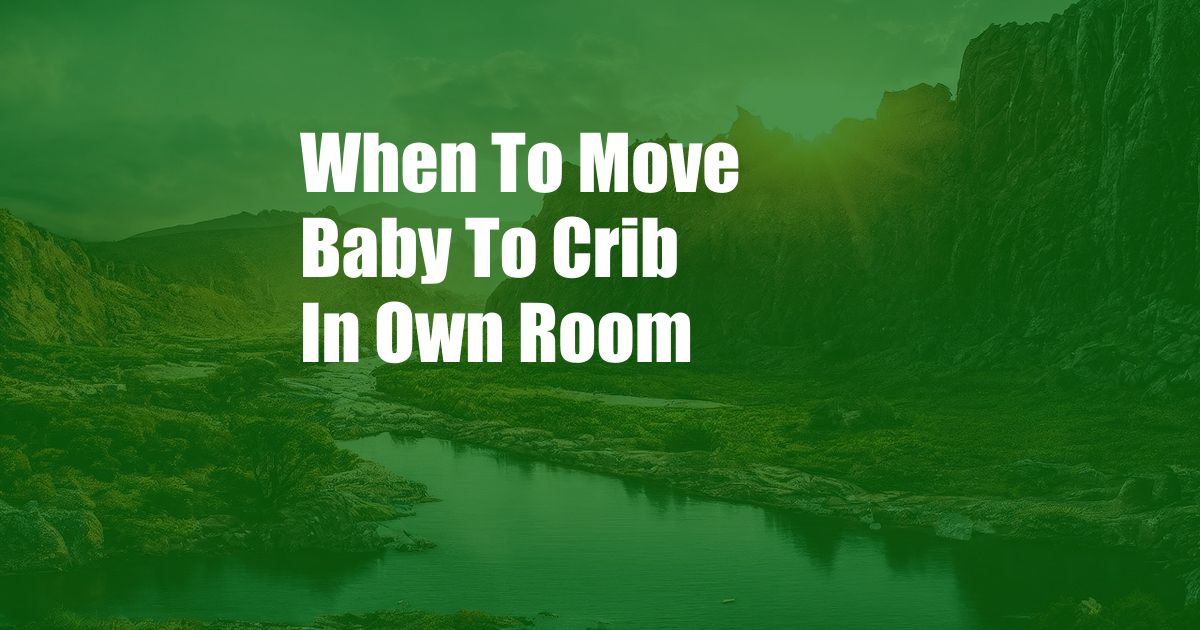
When and How to Transition Your Baby to Their Crib in Their Own Room
The decision of when and how to transition your baby to their crib in their own room is a momentous one, filled with both excitement and trepidation. As a new parent myself, I remember the sleepless nights I spent rocking my little one to sleep, wondering when the day would come when she’d finally be able to sleep independently in her own space. In this article, I’ll share my experiences and insights, as well as expert advice, to help you make this transition as smooth and successful as possible for both you and your baby.
It’s important to keep in mind that every baby is unique, and there is no one-size-fits-all answer to this question. Some babies are ready to make the move as early as 3 or 4 months old, while others may not be ready until they’re closer to a year old. Ultimately, the best time to transition is when both you and your baby are ready.
Signs Your Baby May Be Ready for Their Own Room
There are several signs that may indicate your baby is ready to transition to their own room. These include:
- They’re sleeping through the night or only waking once or twice to feed.
- They’re able to self-soothe and fall back asleep on their own.
- They’re starting to get too big for their bassinet or crib.
- You’re comfortable with the idea of them sleeping in their own room.
How to Make the Transition Smooth
Once you’ve decided that your baby is ready to make the transition, there are a few things you can do to make it as smooth as possible:
- Start by gradually transitioning them. Start by putting them down for naps in their crib in their own room for a few hours each day. This will help them get used to the idea of sleeping in their own space.
- Create a consistent bedtime routine. This will help your baby learn to associate certain activities with bedtime, such as taking a bath, reading a book, and singing a lullaby.
- Make sure their room is dark, quiet, and cool. These conditions are ideal for sleep.
- Be patient and consistent. It may take some time for your baby to adjust to sleeping in their own room. Be patient and consistent with your bedtime routine, and eventually, they’ll get the hang of it.
Expert Advice
In addition to my own experiences, I’ve also consulted with several experts to get their advice on this topic. Here’s what they had to say:
Dr. Harvey Karp, author of The Happiest Baby on the Block: “The best time to transition your baby to their own room is when they’re between 4 and 6 months old. By this age, most babies are sleeping through the night and are able to self-soothe. However, if your baby is not yet sleeping through the night, you may want to wait a little longer before transitioning them.”
Dr. Jim Sears, author of The Baby Book: “It’s important to create a consistent bedtime routine and to make sure your baby’s room is dark, quiet, and cool. These conditions are ideal for sleep. You may also want to consider using a white noise machine to help block out any distracting noises.”
FAQ
Here are some of the most frequently asked questions about transitioning your baby to their own room:
- What if my baby wakes up crying in the middle of the night?
- How long does it usually take for a baby to adjust to sleeping in their own room?
- Should I put my baby in their crib awake?
If your baby wakes up crying in the middle of the night, it’s important to stay calm and consistent. Go to them and comfort them, but don’t pick them up right away. Instead, try patting them on the back or singing to them. If they continue to cry, you may need to feed them or change their diaper.
Every baby is different, but most babies adjust to sleeping in their own room within a few weeks. Be patient and consistent with your bedtime routine, and eventually, they’ll get the hang of it.
If your baby is old enough to self-soothe, you can put them in their crib awake. However, if they’re still very young, you may want to rock them to sleep first before putting them down.
Conclusion
Transitioning your baby to their crib in their own room is a big step, but it’s one that can be made smoothly and successfully with a little planning and preparation. Remember, every baby is different and there is no one-size-fits-all answer. Be patient, be consistent, and don’t be afraid to ask for help from your pediatrician or a sleep consultant if you need it. Are you interested in the topic I discussed above?